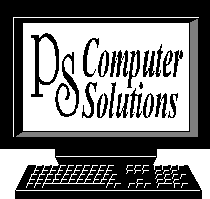Introduction to Java™ J-150
Available on Ohio State Term Schedule (Netwave Corp. STS)
5-Day Course
$2175This intensive course provides a solid introduction to the Java programming language and development environment. In this fast-paced, hands-on course, programmers acquire the skills they need to write standalone, client/server, and intranet applications in Java.
Audience
While development managers, software support staff, and documentation personnel can benefit significantly from this course, it is aimed primarily at programmers: staff whose primary responsibility is the implementation of system designs in program source code.
Key Topics
Java Environment Java Basics Classes in Java Arrays and Strings Applying Inheritance Writing Java Applets Abstract Windowing Toolkit Exceptions I/O Streams More of the Java APIsPrerequisites
Programming experience and familiarity with C are required. An understanding of C++ is desirable. Participants should understand object-oriented concepts and have used a WWW Browser, such as Netscape or Explorer.
E-Mail: Pam@PSComputerSolutions.com
Available on Ohio State Term Schedule (Netwave Corp. STS)
4-Day Course
$2025Prerequisites:
Students should take the Enhancing Web Pages with JavaScript course and have a strong familiarity with using the Internet or should have equivalent knowledge.
Audience:
Students enrolling in this course should have a strong understanding of HTML programming and should have a basic familiarity with JavaScript. They should have examined scripts written by others and have implemented other people’s scripts on their web pages. This is a serious programming course for those students who want to gain a full understanding of this powerful programming language.
Course Content
Students will learn how to write JavaScript programs that use the latest language techniques (version 1.3). Students will also learn how to write programs that are compatible with previous versions of the language and are cross-browser compatible.
Lesson objectives help students become comfortable with the course, and also provide a means to evaluate learning. Upon successful completion of this course, students will be able to:
·
List the JavaScript syntax rules and implement good coding practices.·
List the data and variable types that JavaScript supports, use the many control statements available in JavaScript, and create and use functions.·
Describe object characteristics, use objects, instantiate objects, and create custom objects.·
Describe the purpose of the Document object and use its properties, methods, and event handlers.·
Script with frames in mind.·
Describe the purpose of the Form object and use its properties, methods, and event handlers to read and write to HTML forms.·
Choose a general process for validating user input into web forms.·
Validate user input into HTML forms including testing for required fields, numeric data and numeric data within a range of values specified, and string data.·
Describe the purpose of the Date object, instantiate and use instances of the Date object to create clocks, count-down timers, and perform date math.·
Describe the purpose of the Math object and use its constants and methods to perform mathematical operations.·
Characterize the compatibility landscape and choose between the various techniques for dealing with potential incompatibilities. Detect browsers in order to create code that works around platform incompatibilities.
Course Content
Lesson 1: Getting Started with JavaScript
·
JavaScript Overview·
JavaScript Programming OverviewLesson 2: JavaScript Building Blocks—Variables and Operators
·
Variables and Data Types Overview·
Using Variables and Data·
OperatorsLesson 3: JavaScript Building Blocks—Control Statements
·
Controlling the flow – JavaScript Control StatementsLesson 4: JavaScript Building Blocks—Functions and Objects
·
Functions·
ObjectsLesson 5: The Window Object
·
The Window Object·
Dialog Boxes·
Status Bar Messages·
Window ManipulationsLesson 6: The Document Object
·
The Document Object·
Writing to Documents·
Dynamic DocumentsLesson 7: Working with Frames
·
HTML Frames Review·
Scripting for FramesLesson 8: Working with Forms and Forms-based Data
·
The Form Object·
Reading Data from Form ElementsLesson 9: Validating Form Data
·
A General Approach·
Testing for Required Fields·
Validating Numeric Data·
Validating String DataLesson 10: Dates and Math
·
Overview of the Date Object·
Using and manipulating Dates·
Overview of the Math Object·
Doing Math with JavaScriptLesson 11: Introduction to Cross-browser Compatibility
·
Examining the Compatibility Landscape·
Detecting Browser and PlatformsAdditional information: This course teaches cross-browser programming techniques, and thus requires both Internet Explorer and Navigator to be installed. Students will not be able to complete some exercises if they do not have access to both browsers.
(Advanced JavaScript Programming Portion)
Overview:
Students who are already familiar with the fundamentals of JavaScript programming will learn how to develop scripts that are modular, easily maintainable, and compatible with multiple browsers. Students will learn debugging techniques and how to use advanced programming features such as custom objects, arrays, and cookies. Students will also learn how JavaScript communicates with other software such as applets and server-side scripts.
Objectives
Lesson objectives help students become comfortable with the course, and also provide a means to evaluate learning. Upon successful completion of this course, students will be able to:
·
Debug and maintain JavaScript code libraries.·
Develop Web pages that display different content or execute different code based on the version of JavaScript that is present on the Web client.·
Create custom objects with custom methods and properties.·
Create, read to, write from, and delete single and multi-dimensional arrays.·
Store, retrieve, and delete cookies.·
Write JavaScript code to communicate with Java applets, ShockWave movies, ActiveX controls, and server applications.
Lesson 1: Programming techniques
·
Toward ease of maintenance·
Debugging JavaScript codeLesson 2: Cross-browser compatibility
·
Supporting multiple browsers·
Dealing with browsers that do not support JavaScript·
Detecting browser and JavaScript versions·
Object detection·
Custom error handlersLesson 3: Custom Objects
·
Introduction to objects·
Constructor functions·
MethodsLesson 4: Arrays
·
Introduction to arrays·
Creating and populating arrays·
Deleting array elements·
Multi-dimensional arraysLesson 5: Cookies
·
Introduction to the Cookie object·
Storing cookies·
Reading and processing cookie values·
Deleting cookiesLesson 6: Communicating with applets and server applications
·
Communicating with Java applets·
Communicating with ShockWave applets·
Communicating with ActiveX·
Communicating with server applications
E-Mail: Pam@PSComputerSolutions.com
For Additional Information Contact Pam
Phone: (740)477-9084 Fax: (740)474-1290
Back to PS Computer Solutions Home
